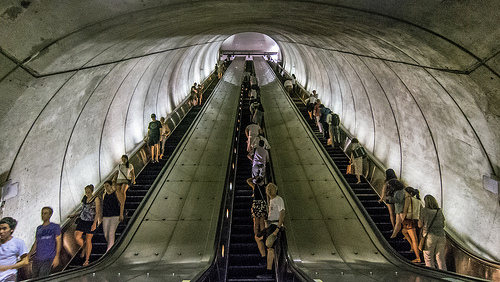Lots of Maryland residents from places other than Montgomery and Prince George’s use Metro
Although WMATA’s impact on Maryland is most significant in Montgomery and Prince George’s Counties, the system is important to the entire state. 5% of daily Metrorail total ridership comes from Maryland locations outside of those jurisdictions.
Every Maryland Metro station is in Montgomery or Prince George’s County, but we have long known that Maryland Metro riders come from all over the state. A typical morning at Union Station finds a flow of MARC train commuters going from the commuter rail line to the subway. Other residents from southern Maryland, for example, access the system by parking at Prince George’s County stations.
While lawmakers in Annapolis often see WMATA as a Montgomery and Prince George’s County issue, the system affects a much larger portion of Marylanders.
The study includes the origination and destination of Maryland riders, purpose of the trip, and how riders get to and from the system. You can read the full study here, and some major takeaways are below:
- Only a small majority (52%) of Maryland Metrorail riders access the system by car, with the rest using other modes such as bus, bike, or foot.
- While 34% of Montgomery County riders access Metro by foot in the morning, just 11% in Prince George’s County riders do so. That suggests that investment in transit-oriented development in the two counties has not been equal.
- 5% of rail and bus system riders commute from DC and Virginia into Maryland each weekday morning, representing a not insignificant reverse commute.
- 3.3% of all rail and bus trips on a typical weekday are by Maryland residents besides those living in Montgomery and Prince George’s Counties.
- 5% of daily Metrorail ridership on a typical weekday is by Maryland residents besides those in Montgomery and Prince George’s Counties.
- There are thousands of Metrorail riders from jurisdictions in Maryland besides Montgomery and Prince George’s Counties. The data should be more focused in future reports, as right now WMATA only studies five non-Montgomery and Prince George’s categories of origins.
WMATA capital and operating subsidies represent a rising cost for the state of Maryland even though WMATA is not increasing the jurisdictional operating subsidy this year. For Maryland’s investment to continue to grow— and if WMATA is going to be a world class system again, it’s going to have to— it’s important to have data such as this to support Maryland’s role in the system.
The study, which a 2015 General Assembly bill called for, was part of a broader effort to increase attention to WMATA issues in the state house. It’s now required every five years, and future versions should have even more specific data.

